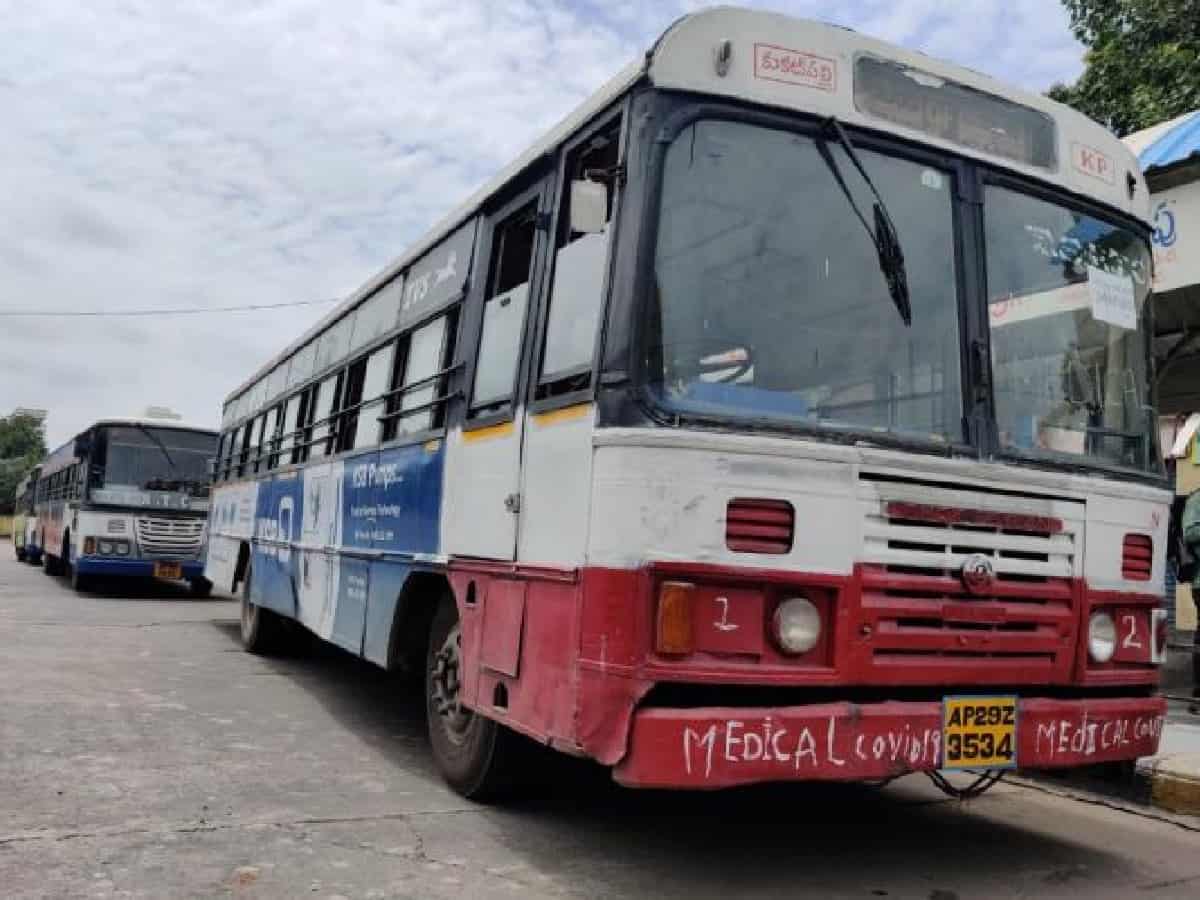
Hyderabad: Buses belonging to state transport undertakings (STUs) of the two Telugu states of Telangana and Andhra Pradesh fare poorly in terms of being accessible to those with disabilities.
Data presented in the Parliament reveals that while the Telangana State Road Transport Corporation (TSRTC) has a fleet of over 9,691, only 122 are accessible to those with disabilities. The case is worse with the Andhra Pradesh State Road Transport Corporation (APSRTC) which has 11,969 buses, of which only 64 have been classified as accessible to those with disabilities. That is 1.25% and 0.53% respectively are disabled-accessible.
According to a reply which the Ministry of Road Transport and Highways provided to Rajya Sabha member Amee Ajnik, 61 STUs across the country operate a total of 1,45,747 buses, of which 51,043 are accessible to the disabled. This means that the percentage of disabled accessible buses in the country is 35%.
While this may be the case, a closer look reveals that only 8,695 buses in the country are fully disabled-accessible. Thus, reducing the percentage of fully disabled-friendly buses to less than 6%.
The Ministry of Housing and Urban Affairs in the Harmonised Guidelines and Standards for Universal Accessibility 2021, an initiative that seeks to bring about inclusion and accessibility, and define, physical, visual, hearing, speech, and intellectual disabilities and mental illnesses, proposed certain guidelines for accessible public transport, including buses.
There are 11 specific guidelines for buses, some of which include 1,200 mm wide bus doors, low floors, handrails and footlights, hydraulic lift or a pull-out or foldable ramp at the doorway, and display or route information and final route destination in large, contrasting colour text.
Data from Accessible India initiative shows that the Centre’s Department of Empowerment of Persons with Disabilities lists nine disabled-friendly parameters for buses. Unfortunately, a large number of buses of the TSRTC do not satisfy these parameters.
Many do not have wheelchair safety belts and wheel stoppers and hydraulic lift or pull-out/foldable ramp at the entrance. Others do not have priority seats with appropriate facilities for securing the crutches, canes, and walkers. Similarly, controls adjacent to priority seats with auditory and visual indications for requesting stops are absent.
The case with buses of the APSRTC is similar.
Experts point out that in many cases, the availability of 1,200 mm wide bus doors parameter being fulfilled or the mere availability of handrails, another parameter, do not make buses truly disabled-friendly. A more holistic, and inclusive approach is required, they argue.
A step in this direction was taken after Vaishnavi Jayakumar, a disabled rights activist, moved the Madras High Court, challenging the Tamil Nadu government’s decision to procure only 10% of new bus procurements which are low floor for Chennai’s Metropolitan Transport Corporation.
Back in Telangana, some of the buses which are fully accessible to those with disabilities are Olectra e-buses which travel to the Hyderabad airport.
Meanwhile, information provided also shows that Rajasthan State Road Transport Corporation, Orissa State Road Transport Corporation, South Bengal State Road Transport Corporation, Uttarakhand Transport Corporation, Tripura Road Corporation, Punjab State Bus Stand Management Co, State Punjab Transport, Nagaland State Transport, Mizoram State Transport, Meghalaya Transport Corporation, J&K State Road Transport Corporation, Arunachal Pradesh State Transport Department, and ST Haryana have no disabled-accessible buses.



